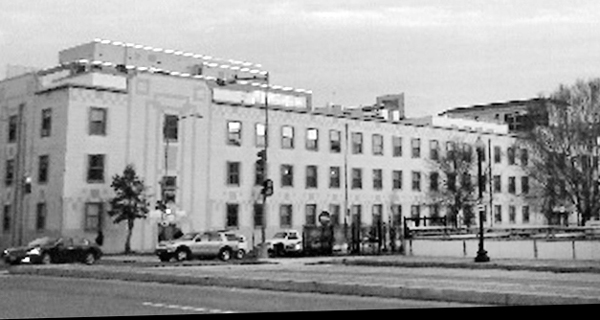
PHOTO/ERIC SHEPTOCK
WASHINGTON, DC. — The historic CCNV shelter (Community for Creative Non-Violence) is slated to close in a few years, and homeless leaders are mobilizing to ensure that the homeless are not left out in the streets with nothing. A group of homeless advocates called SHARC (Shelter, Housing And Respectful Change) has been effective in getting city officials to form a taskforce which is presently discussing the future of the shelter and its residents. We are pushing for a mixture of affordable housing and shelter to replace the 75-year-old deteriorating building.
The CCNV building was built in 1940 as a World War II army barracks, then became Federal City College, and then sat vacant for several years. In the early eighties, homeless folks began to go in and squat in the building. When the Feds came to get them out, a guy named Mitch Snyder actually organized the homeless to do civil disobedience. Mitch went on a hunger strike and almost died from it. Fifty-one days into his hunger strike, it was election time and Reagan agreed to turn over the building. After the election, he broke his campaign promise and Mitch went on another hunger strike. Reagan finally caved in and had the building renovated and turned into a shelter that was completed in 1986. Snyder and Reagan signed a restrictive covenant saying the building would remain a shelter for thirty years until 2016. As 2016 draws near, the homeless are talking about what’s going to happen to them. Some forces out there are trying to get around that covenant and have it closed down early.
It was the battle of hundreds of advocates and activists that created CCNV, which has held as many as 1700 people (until its capacity was decreased to 1,350 due to over-crowding). The homeless have fought to retain the shelter over the years, but they have not done as well with affordable housing, because rents are going up and we’re actually losing whatever affordable housing we had at one time.
Five groups of advocates recently came together to form an umbrella group called DC Hope. We are making it a point to learn from the past and develop a collective understanding of the system we are up against. Whereas the 1980s activists confronted the federal government, most present-day advocates are approaching the local DC government for whatever concessions they can get. Of late they have realized that we are getting less and less. They ask questions such as, “In whose interest does the mayor rule?” or “How can we organize better and have a greater impact?”
Some are questioning the Democratic Party, which controls DC politics and is chiseling away at our much-needed local social safety net and giving away our public land. The politically conscious advocates are developing the understanding that government and the Democratic Party are not working in the interest of the poor and dispossessed. This is the starting point for the next stage of our movement.

I think that the Government shouldn’t close the shelter. The people that live there, are not bad people. What I think, is that the media interview most people that have poor dialogue and have no knowledge of public speaking. I’m not trying to get side track but everyone needs a place to live. The shelter save my life and the people there as well. Now I’m in college with GPA 3.14 and the people their at CCNV are my family. I have more on with my life and that is my opinion on the shelter.